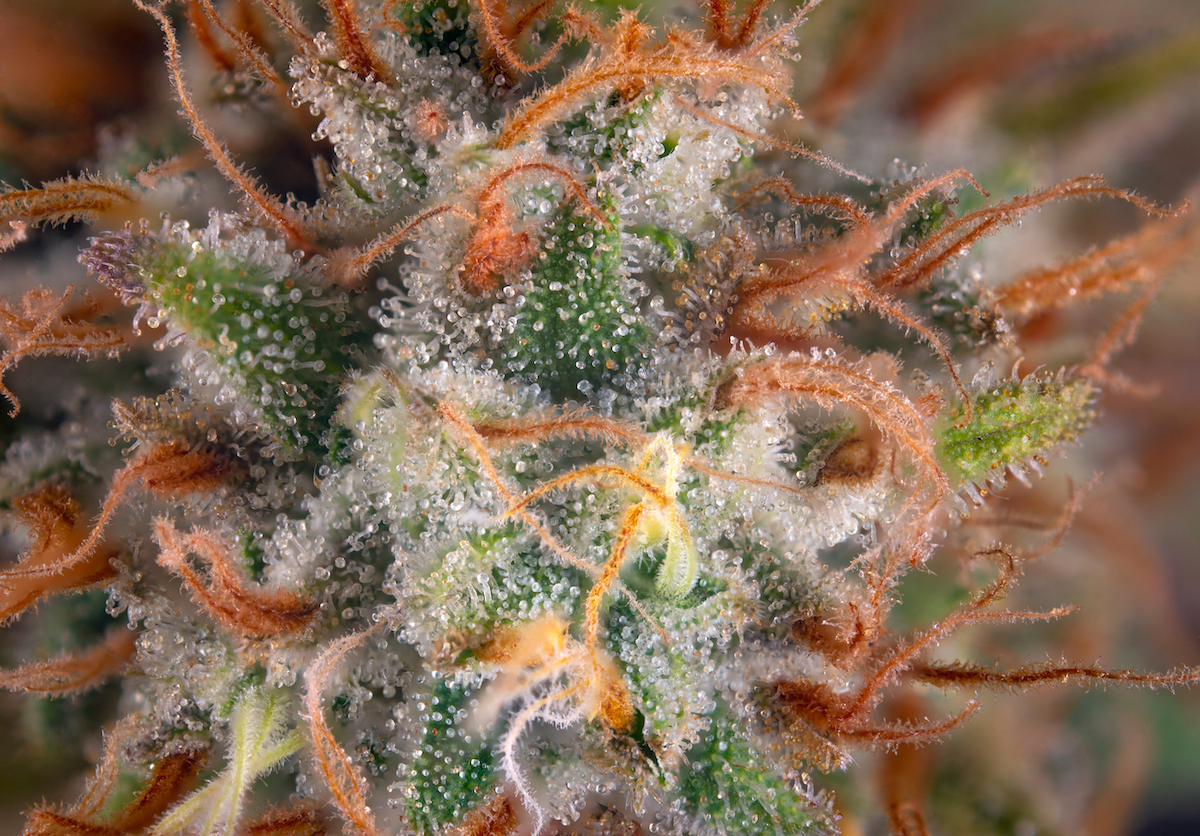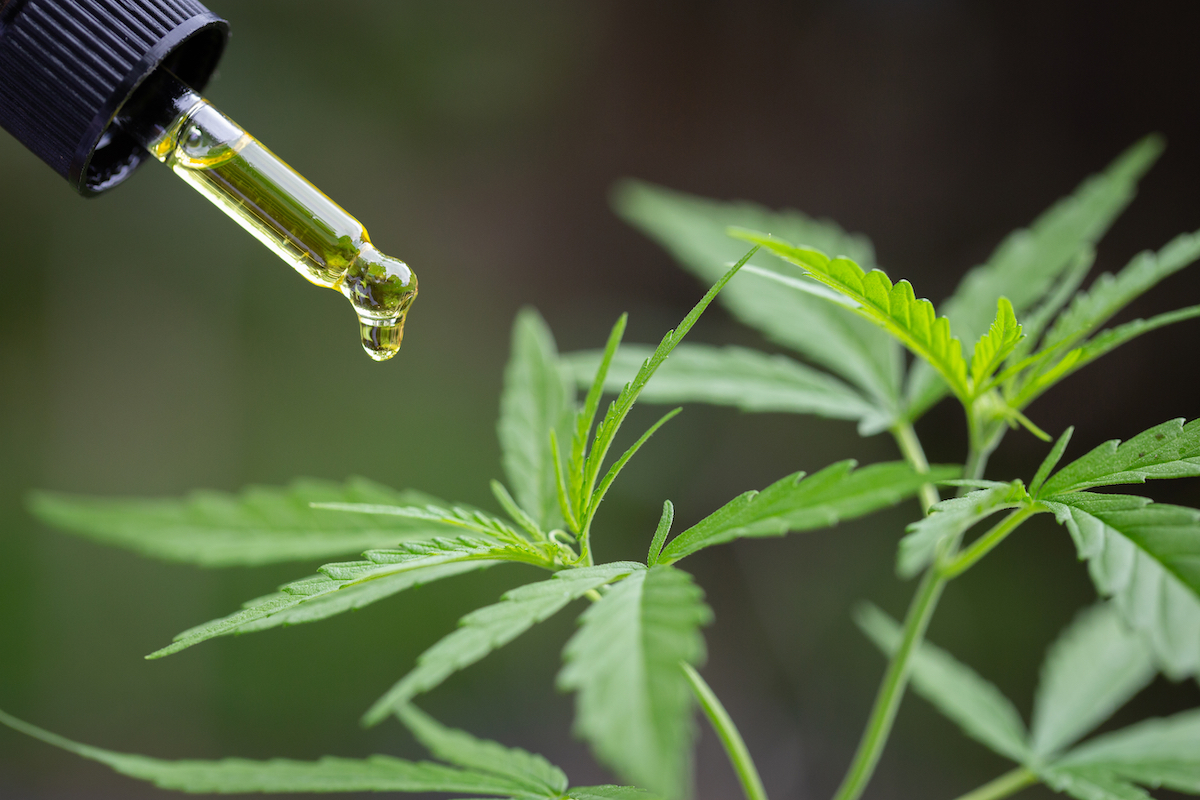- Cannabichromene (CBC) is one of the most abundant phytocannabinoids in the cannabis plant, but it is also one of the least known.
- First discovered in 1966, CBC is structurally like many other cannabinoids such as THC and CBD.
- But research indicates that it interacts with the endocannabinoid system through different receptor channels, which may be the key to its medical investigation.

In its natural form, cannabis does not produce active cannabinoids such as CBD or CBC. The plant itself produces many acidic cannabinoids that can only be transformed into their active state through a process known as decarboxylation. In simple terms, decarboxylation means exposing cannabis to high temperatures or UV rays so that all acidic cannabinoids are transformed into non-acidic active compounds.
The interesting thing about CBC is that it is created from the same acid that produces CBD and THC, cannabigerolic acid (CBGA), known as the "stem cell" of cannabinoids. After the cannabis plant reaches the maturation stage, the enzymes transform CBGA into a variety of compounds such as CBDA, THCA and CBCA, which are the precursors of the three main cannabinoids. This means that CBC has a molecular structure very similar to that of these popular cannabinoids. However, unlike THC, CBC is not psychoactive.
What are the effects of CBC?
Like the other cannabinoids, its effects are produced through interaction with the receptors of the endocannabinoid system of the human body. But unlike THC, CBC binds quite badly with the CB1 receptors in the brain, which is where THC exerts its psychoactive effects. In fact, CBC seems to interact on receptors other than the best-known CB1 and CB2 receptors.
Research indicates that CBC binds more effectively with the TRPV1 and the TRPA1 receptors, both linked to the perception of pain and acting as molecular integrators of physical and thermal stimuli.
And when CBC activates these receptors, it leads to the release of higher levels of natural endocannabinoids, such as anandamide, also known as the "bliss molecule". This explains the different way in which CBC acts: while THC and other cannabinoids are directly coupled to their respective receptors (such as CB1 and CB2), CBC indirectly activates these cannabinoid receptors through the production of anandamide, with significant implications for its role in pain relief.
CBC can also play a fundamental role in the "entourage effect", in which cannabinoids act synergistically to modulate the overall effect of cannabis. Thus, a study found that when used together, CBC and THC can control inflammation more effectively than when used separately.

Five medicinal properties of CBC
Like other cannabinoids, CBC has great medical potential for uses such as:
- Chronic pain relief
A study in rats found that CBC showed great potential for acting as an analgesic, to block any pain and inflammation associated with collagen-induced osteoarthritis. In fact, the study suggests that it could be as good as CBD, and without the negative side effects that traditional anti-inflammatories have, so it could be an effective alternative to the highly addictive opioids and steroids that are usually prescribed for pain control.
- Neural regeneration
For many years, it was thought that once you reach a certain age, the brain stops growing. But this is not true. For example, the cells responsible for learning and memory are continuously produced through a process known as neurogenesis. In people suffering from Alzheimer's and dementia, this neurogenesis is disturbed.
A study conducted in 2013 found that CBC could, in fact, promote neurogenesis. The researchers tested the effects on the neural stem cells of adult mice and found that CBC increased the viability of these cells, which means that the cannabinoids improved their function.
- Antibacterial agent
CBC has significant antibacterial properties and could help fight several gram-positive and gram-negative bacteria, such as E. coli and staphylococci. One study found that CBC, along with other cannabinoids, was equally if not more effective in the treatment of MRSA (Methicillin-Resistant Staphylococcus Aureus) compared to potent antibiotics such as vancomycin. The positive side? CBC does not have any of the negative side effects that these antibiotics have.
- Anti-depressant
THC and CBD are effective in the treatment of stress, anxiety and, of course, depression. But now, scientific research has found that CBC also helps. A study conducted in 2010 by researchers from the University of Mississippi found that the rats that were treated with CBC achieved better results in stress tests. It is believed that chronic stress is one of the main triggers associated with depression. In short, the better you adapt to stress, the less likely you are to become depressed.
- Fighting acne
CBC can also help with skin problems. A study carried out in 2016 found that CBC was a powerful inhibitor of acne, a disease where excessive levels of sebum production and inflammation of the sebaceous glands are the main causes. Due to its anti-inflammatory capacity and its ability to slow the production of lipids in the sebaceous gland, CBC is effective in the treatment of acne.

How to use CBC?
CBC can be found in all cannabis varieties. Unfortunately, it only appears in very small quantities and given the patchwork of cannabis laws around the world, CBC is not accessible to everyone in this format.
However, CBC can also be found as an ingredient in various broad spectrum and full spectrum CBD oils. If you are interested in enjoying the potential benefits of CBC or want to experience the entourage effect of the entire plant, look for CBD products that contain CBC and other cannabinoids, as well as terpenes, flavonoids and natural fatty acids.



Comments from our readers
There are no comments yet. Would you like to be the first?
Leave a comment!Did you like this post?
Your opinion about our seeds is very important to us and can help other users a lot (your email address won't be made public).